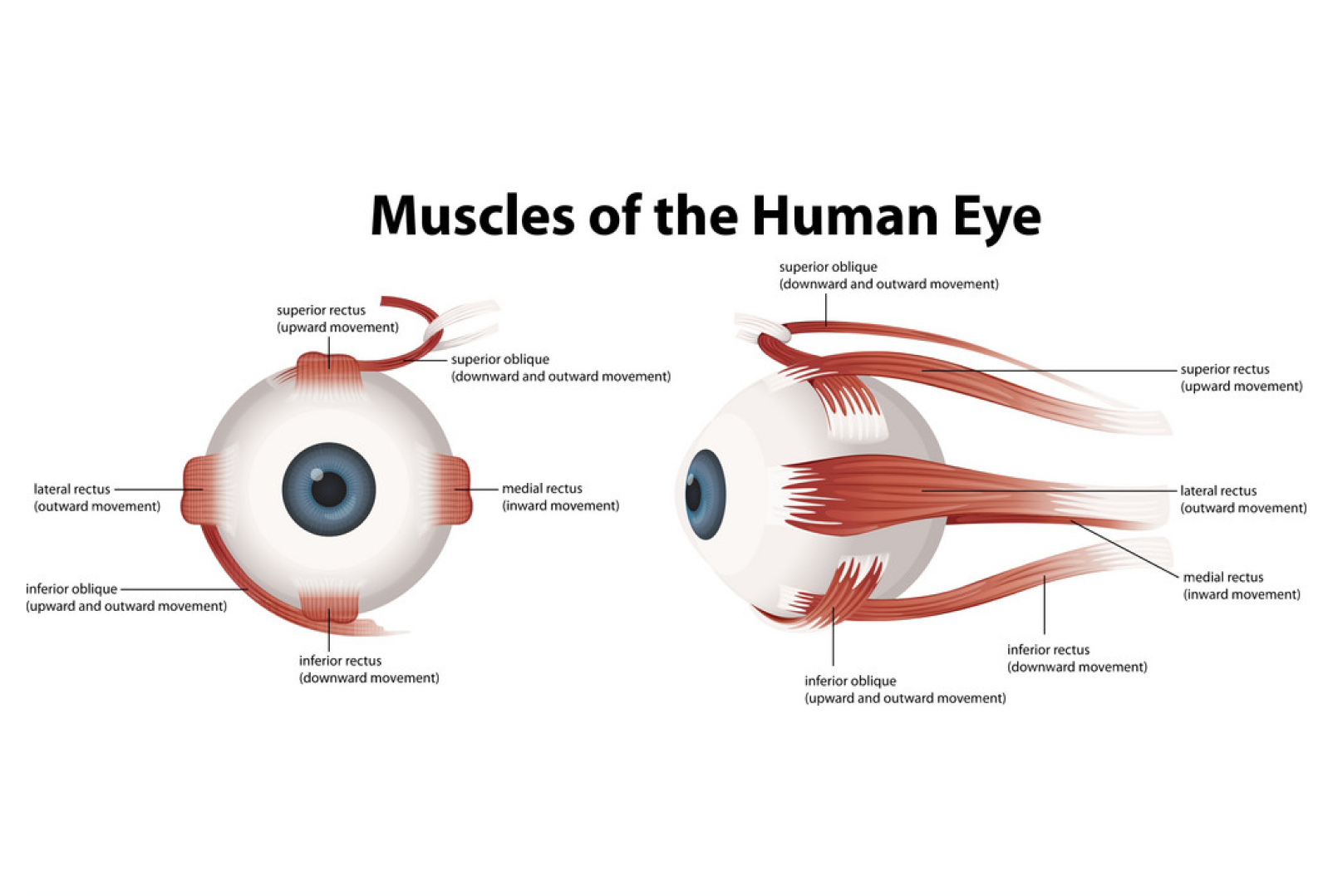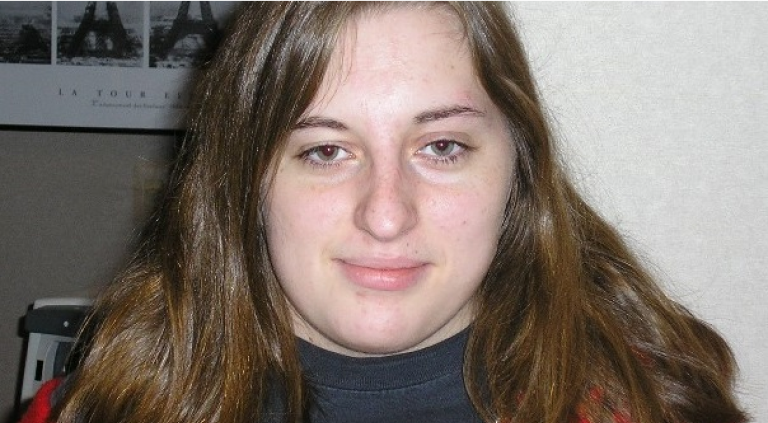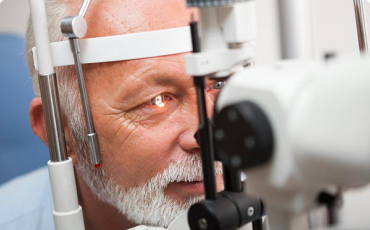How Eye Muscle Strain Can Lead to Headaches and Dizziness
Any condition which disrupts the eyes’ ability to aim and focus correctly can lead to eye muscle strain, which usually makes its presence known with symptoms of blurred vision, headaches, dizziness and even reading and learning difficulties

Due to the wide range of symptoms exhibited, it’s not uncommon for patients experiencing them to consult with a variety of different doctors and specialists – though, unfortunately, they often don’t find the relief they’re seeking. This is due in large part to the fact that most people aren’t aware that the visual system can cause the symptoms from which they suffer, and so they don’t think to seek the assistance of a vision specialist. One of the conditions most likely to cause such symptoms is Vertical Heterophoria, a form of Binocular Vision Dysfunction.
Any condition which disrupts the eyes’ ability to aim and focus correctly can lead to eye muscle strain, which usually makes its presence known with symptoms of blurred vision, headaches, dizziness and even reading and learning difficulties. While some people who have issues with their eye muscles may only experience one of these symptoms, others are unfortunate enough to suffer the effects of multiple symptoms.
Vision is among the most complex and extraordinary of the senses, and is made possible by the muscles that control eye movement (Figure 1). These important muscles, known as the extra-ocular muscles, play an essential role in the visual process. Every movement your eyes make, whether looking up, down or side-to-side, is governed by the extra-ocular muscles. They work to direct the eyes in response to signals from the brain, moving the eyes so that they point in the same direction simultaneously. This allows a single image to form clearly in the brain during a process known as fusion.


FIGURE 1
Patient’s face is asymmetrical
With Vertical Heterophoria (VH), the eyes have trouble staying aligned vertically. This condition tends toward creating double vision, which the brain won’t stand for. VH can present itself when the **patient’s facial symmetry is face is asymmetrical** and slightly misaligned, resulting in one eye being physically higher than the other one (Figure 2). At other times, the eyes can be in perfect alignment but VH symptoms are due to muscle or nerve abnormalities. In certain cases, this condition can also be brought on by neurological disorders, stroke or head trauma. Usually, however, VH is a congenital condition present from birth, and it tends to run in families. In some instances, symptoms don’t start appearing until years down the road, due to the body’s efforts to adapt and counteract the effects of the condition.


Vertical Heterophoria
With Vertical Heterophoria (VH), the eyes have trouble staying aligned vertically. This condition tends toward creating double vision, which the brain won’t stand for. VH can present itself when the patient’s facial symmetry is slightly misaligned, resulting in one eye being physically higher than the other one (Figure 2). At other times, the eyes can be in perfect alignment but VH symptoms are due to muscle or nerve abnormalities. In certain cases, this condition can also be brought on by neurological disorders, stroke or head trauma. Usually, however, VH is a congenital condition present from birth, and it tends to run in families. In some instances, symptoms don’t start appearing until years down the road, due to the body’s efforts to adapt and counteract the effects of the condition.
The brain cannot tolerate double vision and, in the effort to fuse the two images it receives from the eyes into one, the eye misalignment must be addressed. The brain does this by forcing the muscles to aim one eye a little higher and the other a little lower. With this amount of strain on the eye muscles, in time, they become overworked and tired, sore and stressed, which then brings on the symptoms of VH.


Figure 2
Headaches centered around the temples or in the front of the face are one of the most common symptoms of VH, along with feeling dizzy, disoriented or lightheaded. These sensations occur when the fatigued eye muscles become so tired that they’re no longer able to the hold the two images together into one (fusion). It’s this movement in and out of fusion that can throw you off-balance and bring on feelings of being lightheaded or dizzy.

Additional VH Symptoms
Along with the aforementioned symptoms, sufferers of VH can also experience the following:

Physical symptoms:
Pain with eye movement, pain or aching of the eyes or face (all symptoms similar to migraines, TMJ and sinus issues); upper back and neck pain caused by head tilt (comparable to spinal misalignment problems);

Vestibular symptoms:
Poor depth perception, motion sickness, nausea, balance issues when walking (drifting or unsteadiness), poor coordination (like those experienced by patients with MS, Meniere’s Disease, inner ear disorders or sequela of a stroke);

Reading difficulties:
Problems concentrating (like someone with ADHD might experience), reading and comprehension issues, such as skipping lines when reading, words blurring and running together, losing one’s place when reading (similar to symptoms seen in those with learning disabilities);

Visual symptoms:
Shadowed vision, overlapping vision, blurred or double vision (comparable to symptoms experienced by MS patients); sensitivity to light, problems with reflection or glare;

Psychological symptoms:
Feeling overwhelmed or experiencing anxiety when in big, open buildings with high ceilings and a lot of people, such as a department store or mall (like symptoms often seen in those with agoraphobia or anxiety).
The Solution: Aligning Prism Lenses
To address these debilitating symptoms and help our patients get their lives back, the optometrists at Vision Specialists of Michigan use a unique technique that involves adding prism to your lenses, which adjusts the image that the eye sees up or down, making it much easier for fusion to take place, and taking the strain off the extra-ocular muscles. Once this happens, the blurred vision, headaches and dizziness, and other symptoms markedly improve or disappear as if they were never there.


Schedule a NeuroVisual Examination
Don’t suffer another day longer. To schedule a specialized exam with Vision Specialists of Michigan
Want to learn more about Binocular Vision Dysfunction?
Watch these videos of BVD patient experiences:
Brandon's Binocular Vision Dysfunction Story
Robin's Traumatic Brain Injury
Pastor Jim's Binocular Vision Dysfunction Story
People also view
It may be your eyes
Dr. Sandy DiPonio earned her optometry degree from Illinois College of Optometry in 1996. She is a highly skilled and experienced eye care professional dedicated to giving her patients of all ages excellent and compassionate care. She has a wide variety of experience in binocular vision, pediatric and adult eye care, ocular disease and contact lens fitting. She strives to provide each of her patients the best quality of life they can achieve with their vision through knowledge and education of treatment options.
Dr. DiPonio is a member of the American Optometric Society and Michigan Optometric Society.
Dr. Sally Hoey has been practicing optometry since graduating from Michigan College of Optometry in 2001. During her time in optometry school, she developed an interest in binocular vision, culminating in a senior thesis involving binocular vision.
Prior to joining Vision Specialists of Michigan, Dr. Hoey specialized in the diagnosis and treatment of vision-related learning problems as well as other binocular vision disorders. Her other areas of interest include specialty contact lens fittings and treating dry eye. Dr. Hoey strives to provide her patients with clear, comfortable vision while meeting their individual needs at the same time.
Dr. Hoey had the opportunity to provide eye care on an optometric mission trip to Guyana, South America and vision screenings at a local medical clinic. She is a member of the American Optometric Association, Michigan Optometric Association, Metropolitan Detroit Optometric Society and the College of Optometrists in Vision Development.
Dr. Jennifer Place graduated with honors from Michigan College of Optometry in 2001.
Before joining Vision Specialists of Michigan, she specialized in treating pediatric and adult patients with binocular vision disorders and vision-related learning problems, as well as fitting specialty contact lenses and managing various types of ocular disease. She enjoys working with patients with unique visual needs, and she takes great pride in providing all patients with highly customized care.
Dr. Place has volunteered for Opening Eyes, a program that provides eye exams to the athletes of the Michigan Special Olympics, and she participated in an international mission to St. Lucia to provide eye care to those in need. Dr. Place is a member of the Detroit Optometric Society, the Michigan Optometric Association, the American Optometric Association, the College of Vision Development, and the Optometric Extension Program Foundation.
Dr. Mary Jo Ference has been practicing optometry since 1990 upon graduating from Ferris State University- Michigan College of Optometry, and is certified in Low Vision Rehabilitation. She has worked at Sinai-Grace Hospital systems for over 20 years before joining Vision Specialists of Michigan in 2013 to work with binocular vision disorders. Her clinical areas of expertise include visual rehabilitation of pediatric and adult patients who have suffered from brain trauma, injury or disease. She has taught both optometry and ophthalmology residents at Sinai Grace Hospital. Dr. Ference has sat on numerous boards, including Sinai Grace Hospital, Berry Out-Patient Surgical Center, and Seedlings Braille Books for the Blind. She is actively involved in area school districts to provide education, training and access for students, teachers, OT’s and PT’s to eye care service rehabilitation information. Dr. Ference has lectured extensively nationally and internationally.
Dr. Debby Feinberg began practicing Optometry in Oakland County in 1983, upon graduating from Illinois College of Optometry. She joined her father, Dr. Paul C. Feinberg, at Mall Optical Center, which was located in Summit Place Mall.
Since 1995 Dr. Feinberg has been developing the field of NeuroVisual Medicine which is the optometric subspecialty that identifies and treats neurological / medical symptoms that originate directly or indirectly in the visual system.
Dr. Feinberg has been performing pioneering work with Binocular Vision Dysfunction (BVD), a condition where a vision misalignment (frequently subtle) creates difficulties with the two eyes working together to create a single 3-dimensional image, and difficulties with the two eyes following that image as it moves.
The symptoms caused by BVD are not usually associated with problems with the visual system, and include headache, dizziness, anxiety and panic, persistent post-concussive symptoms, gait instability and balance problems, frequent falls, neck pain, motion sickness, nausea, and reading and learning problems.
In 2004. Dr. Feinberg established Vision Specialists of Birmingham, specifically designing the practice to accommodate the needs of the NeuroVisual Medicine patient.
In 2011, the office moved to its current location in Bloomfield Hills and updated its name to Vision Specialists of Michigan.










